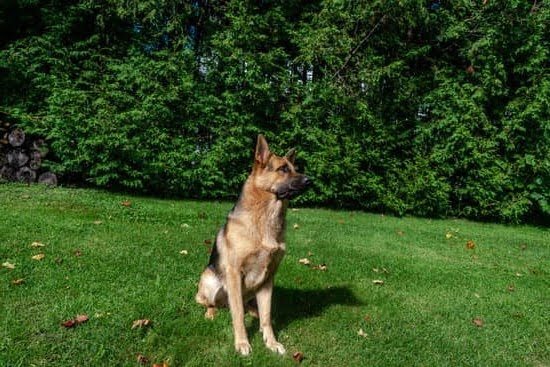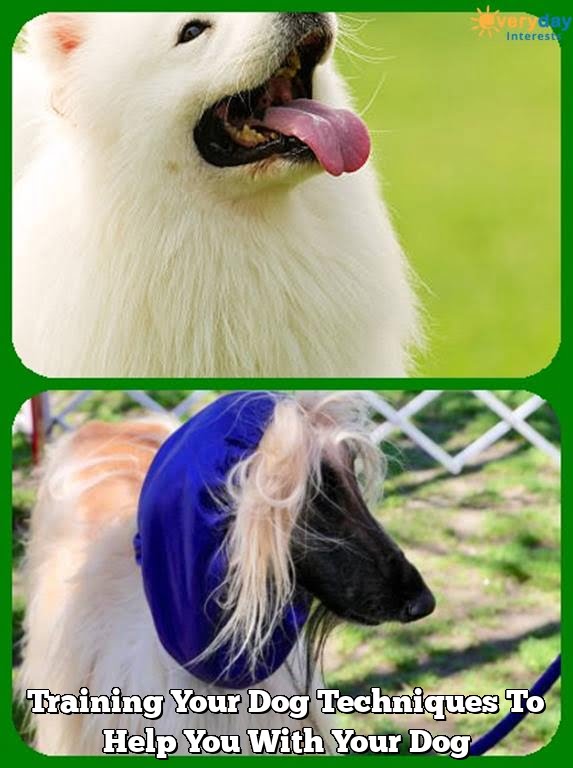Introduction to Dominance Dog Training Techniques
Dominance dog training techniques are based off of theories on pack behavior in the wild. It is based off the idea that for a hierarchical pack to thrive, there must be an alpha or leader who sets rules and enforces those rules when necessary. This theory has been applied to dogs by many trainers, believing that by establishing oneself as a ‘pack leader’ it will create a more obedient relationship between the owner and pet. Through this style of training, a dominant role is assumed over the dog through consistent enforcement of commands and expectations.
Through dominance training dogs are trained to understand that they must respect boundaries set by their owners. Focal points or cues such as eye contact, posturing (ie: while leash walking), vocal commands, etc., can all be used as signals to redirect offending behaviors. Punishments are typically given in increasing severity so that the effect achieved is clear understanding of desired behaviors vs undesired behaviors.
Dominance training has become increasingly popular with both pet and working dog owners, alike. Many find success in creating a well-mannered pup materializing into successful obedience exercises – perfectly demonstrating how dominant training is not just confined to difficult or challenging personalities. Furthermore, many trainers have reported accelerated progress in cases where only basic obedience was required – this comes from laying down the foundation of clear communication between the handler and the animal early on in the process; setting up their relationship from day one appropriately.
Overall dominance dog training indicates excellent potential for solving problematic behaviour and helping build strong relationship bonds between pet parents and their canine family members!
Benefits of Dominance Dog Training
Dominance dog training techniques provide many benefits to both the dog and the owner. Obedience is improved through these methods because it teaches your pet a consistent set of commands and behaviors in order to receive rewards or gain attention. This helps create predictability, which makes it easier for the pet to recognize what is expected from them. It also establishes trust between you and your pet as they learn that following instructions will result in rewards or positive reinforcement.
Furthermore, dominance training helps correct unwanted behavior while encouraging positive behavior. It allows owners to effectively communicate with their pets what commands are required before getting a reward or praise. This builds up the trust that is necessary for long-term obedience.
Moreover, this type of training can help strengthen problem areas such as leash pulling, aggression towards other animals or humans, jumping up, chewing furniture or barking excessively. Through specific techniques such as ignoring bad behavior and rewarding good behaviors, pets can quickly improve on their obedience levels while learning desirable skills that they can hold onto in the long-term.
Overall, dominance dog training can be used to create harmony within a household by teaching dogs the proper behavior expected from them and promoting a healthy relationship between an owner and their pet; ultimately leading to better overall behavioral outcomes for all involved!
Getting Started with Dominance Dog Training
Dominance dog training is an effective technique for getting your pooch to obey you. While some pet owners may be skeptical of the approach, it can yield great results if done correctly. Before attempting to use dominant techniques with your pup, there are a few pre-requisite tasks you should take care of. First and foremost, ensure that your dog has been adequately trained and is familiar with basic commands such as sit, stay, come and walk on a leash. It’s also important that they have been socialized with other animals in order to respond well to environment changes, distractions and multiple people giving commands.
Once you’ve determined that your canine companion has the necessary fundamentals down, finding an experienced trainer or instructor who specializes in dominance will increase the likelihood of success and help keep things safe. A quality trainer will provide not only obedience tips but also safety measures such as using harnesses instead of chain collars when in public or around larger dogs to reduce any potential hazards. Resources like books and online tutorials can also be helpful for brushing up on breed-specific guidelines for dominant behaviors as certain breeds may require certain methods over others. In addition, having the right equipment like leashes, head collars and chew toys can make all the difference in properly enforcing training boundaries from day one.
Common Mistakes When Training with Dominance
One of the most common mistakes owners make when implementing dominance dog training techniques is expecting immediate results. This can lead to frustration or a sense of defeat if the techniques are not applied correctly or if progress does not happen fast enough. To avoid this, it’s important to be consistent and patient when utilizing dominance techniques. It may take several attempts to get your dog to understand what’s expected of them.
Another mistake owners often make when using dominance dog training is overestimating their own authority over their pets. Training with dominance should be done in a way that isn’t aggressive or forceful towards your pet. Keep in mind, you want to correct unwanted behaviors but you don’t want to do it in a way that causes harm or distress for your pup. Owners must remain calm and stay positive throughout the process. Your goal is not only to get them to understand what behavior is acceptable and what isn’t, but also establish an atmosphere of trust and respect between you and your pet so they have a better understanding of why you’re providing instructions in the first place.
Introducing Positive Reinforcement
One of the most effective ways to use both dominance and positive reinforcement in dog training is to use a ’playing tug’ technique. Through this, owners can teach their dogs how to behave with body language rather than harsh commands or physical techniques that were previously used for dominance-based dog training. During the game of tug, owners should be sure to keep control of the toy and only respond positively when their dog follows their commands. When the session is complete, providing a treat as an additional reward will further teach your pup that good behavior leads to rewards.
Additionally, it is important for owners to provide clear praise whenever their dog exhibits behaviors they want while using dominance-style training methods. Verbal cues are incredibly important in this process; offering a specific verbal cue accompanying each new command or every time a desired symptom is displayed firmly establishes what behavior is expected from your pup and informs them that they will receive praise when they obey. Additionally, seeking feedback from other canine behavior specialists and trainers can help owners feel more comfortable using dominance approach while using positive reinforcement as well.
Dominance Techniques for Those Who Struggle
Dominance dog training techniques can be challenging and intimidating for those unfamiliar with the process. However, there are several tips and tricks to help those who may struggle.
For starters, patience is key when it comes to dominance based training. Dogs learn best through consistent reinforcement of commands and positive rewards and as such dominance techniques should not be attempted in a single session. It is important to allow plenty of time so that both trainer and dog can fully understand each other and begin to form a strong bond. Double-check your commands and make sure they are descriptive yet straightforward. Try to remain consistent but also patient while the dog learns your requirements; consistency will encourage quicker obedience while preventing any confusion or frustration on the part of the animal.
Dominance based training requires lots of repetition, so it may be beneficial to actually start small by introducing one or two basic commands that can then be expanded on over time-try using verbal cues in conjunction with hand gestures where appropriate to provide clarity for your canine companion. Additionally, it is important for trainers to never forget about rewarding good behaviour with praise and treats as this reinforces positive behaviour that will ultimately result in better obedience over time. Finally, it’s worth noting that some dogs may simply not respond well to dominance training; if this is the case then switching tactics may be necessary in order to take all factors into consideration.
When to Not Use Dominance Dog Training
Dominance dog training, or dominance based-training, emphasizes the animal’s hierarchical ranking in a ‘pack’ and relies on the use of punishment or dominance to modify behavior. While it can be effective with some dogs, there are certain scenarios in which it shouldn’t be used at all.
First, dominance dog training should not be used with puppies who are under 5 months old as their brains are still developing and young puppies rely heavily on positive reinforcement methods for successful behavior modification. Secondly, dominance dog training is also not considered suitable for rehabilitation cases such as aggression issues or fear-based behaviors – both of which require solutions that focus more on understanding the underlying causes of these issues rather than merely punishing them into submission.
Lastly, reluctant learners can often be confused by this type of training simply because they don’t understand why they are being punished for certain behaviors if they are not doing anything wrong. In this case, it’s best to turn to positive reinforcement instead where rewards and treats are given in order to promote desired behaviors while discouraging undesired ones.
The potential risks associated with using dominance dog training – especially when it comes to safety concerns or potentially dangerous situations – far outweigh any potential benefits that the method might yield. As such, it’s important to become familiar with when dominance based-training is unsuitable so that one can navigate towards a solution that works better for both the animal and its owner.
Resources and Further Reading
There are a variety of books and other literature available to learn more about dominance dog training techniques. The American Veterinary Society of Animal Behavior (AVSAB) provides detailed information on how to properly address aggression, dominance issues, and various other behavioral challenges with dogs. The Association of Professional Dog Trainers (APDT) also provides helpful resources and guides related to pro-dominance training methods. Additionally, there are several books that focus exclusively on dominance dog training techniques. For example, Turid Rugaas’ book “On Talking Terms with Dogs: Calming Signals” serves as an excellent reference for making sense of canine body language and understanding the different ways in which dogs communicate non-verbally. Furthermore, Victoria Schade has designed her own version of dominance based training with her “LIVING WITH YOUR DOG” program which is backed by years of practical experience in managing ground-level behavior modification in dogs. Finally, there is Michael Wombacher’s titled “Pack Leader Psychology: Tools for Being the Alpha Dog” which explains his views on positive reinforcement-based dog training methods used in conjunction with good leadership practices. All three books provide their own specific approach to effective dominance-based techniques and are great resources for anyone looking to broaden their knowledgebase when it comes to successfully managing strong or willful dogs.
Conclusion
Dominance dog training techniques have been proven to effectively teach obedience and reduce unwanted behaviors in a variety of canine species. They involve establishing the owner as the alpha of the pack, using rewards to reinforce desired behaviors, actively praising successes and correcting mistakes. It is important to remember that any form of punishment should be avoided as it can lead to more behavioral issues. Through consistent practice and reward-based results, dominance dog training techniques can help you achieve an obedient and well-behaved pet.
To wrap this blog post up, here are some key takeaways:
1. Dominance dog training techniques are an effective way to train puppies and dogs for obedience.
2. Establishing yourself as the alpha of your pet’s “pack” is essential for successful dominance dog training techniques.
3. Appropriate rewards due to desired behavior are ideal for reinforcing good habits.
4. Consistent practice will promote better results than punishment tactics which could cause further behavioral issues with your pet(s).
5. By utilizing proactive methods such as praising success and correcting mistakes within a positive reward system you will be able to create a well-behaved family pet!

Welcome to the blog! I am a professional dog trainer and have been working with dogs for many years. In this blog, I will be discussing various topics related to dog training, including tips, tricks, and advice. I hope you find this information helpful and informative. Thanks for reading!





